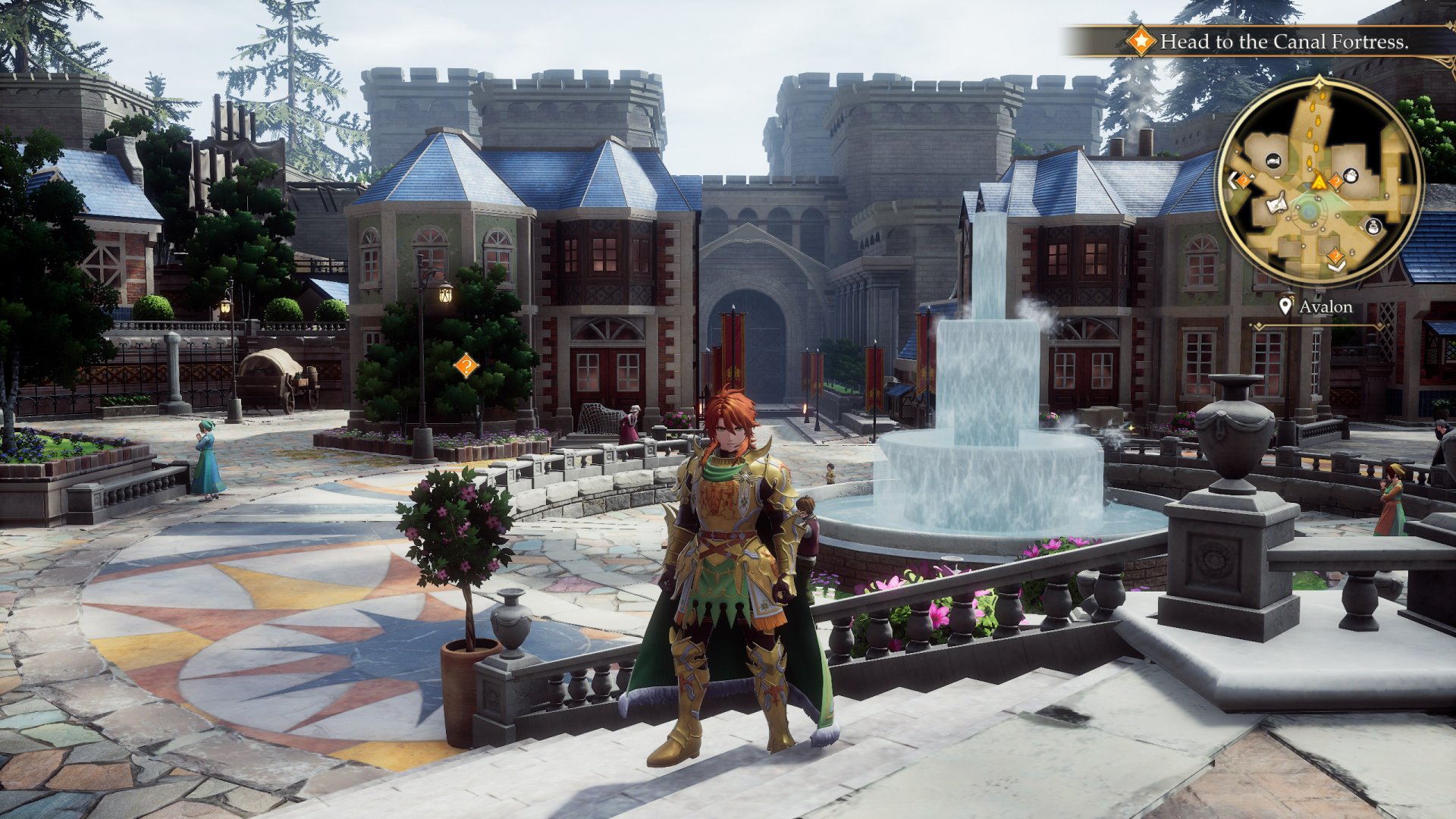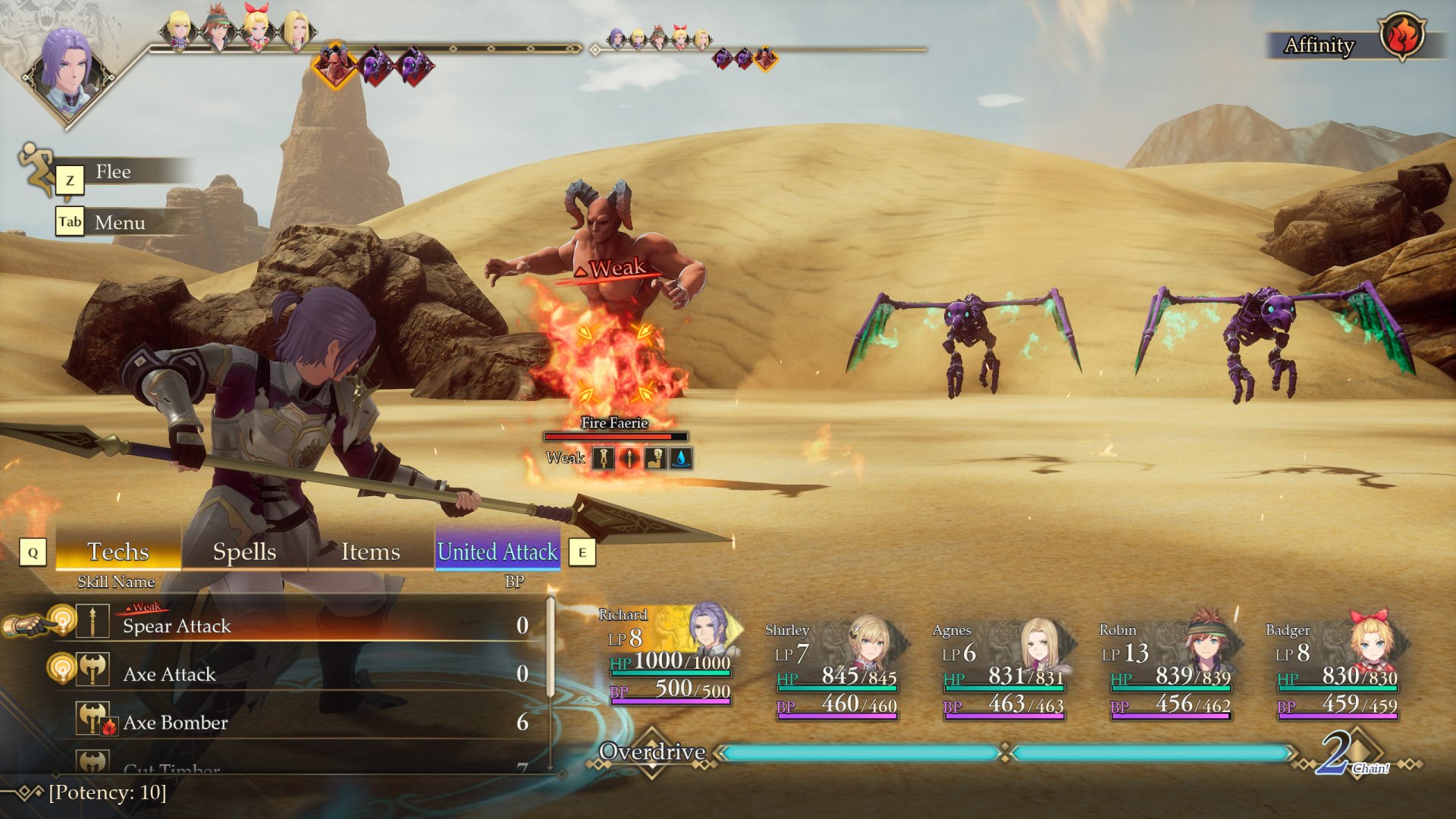I was on my third playthrough. I began a familiar quest, but this time I realized I could enlist the help of an entirely different character and bypass a particularly challenging section. This is an example of the delightful surprises that kept me engaged with Romancing SaGa 2: Revenge of the Seven for three playthroughs, unlocking all achievements. Indeed, throughout my time playing, I continued to be amazed by the intelligent game design, smart balance, and fantastic pacing of the entire experience. I adore this game; please allow me to tell you why.
Kingdom Come: The Basics
Revenge of the Seven is a turn-based JPRG about fighting great evil while expanding your empire over about 1,000 years. Yes, that’s right: your experience isn’t confined to just one era of adventure. There is a succession system whereby you eventually die (like real life) and magically pass on powers and skills to your heirs (not like real life, sadly).

One defining feature is the great freedom you are given in how you wish to unite the continent. After the first few hours of tutorial, many different quest routes become available. Tied to the quests are dozens of recruitable character classes to help bolster your five-person adventuring party. The quests feature stellar voice acting and are surprisingly well-written. The sharp dialogue is a refreshing change from so many cringy anime JRPG tropes. As you play, you’ll slowly uncover the backstory explaining why you’re tracking down and fighting seven individuals who are supposed to be heroes. I greatly enjoyed piecing together the overall meaning of this multi-generational saga of ruin, despair, hope, and betrayal.

I should also note that this game is a remake of the original 1993 Japan-only Super Famicom RPG. This 1993-version was finally translated to English and released on PC in 2017. So you can play the pixel-graphics version on Steam if you want to, but this year-2024 version is a complete remake in 3D, with new content, a much expanded script, and voice acting. That being said, the underlying flow and systems, such as combat, are basically the same as the 1993 game. Speaking of combat…
A ‘Glimmering’ Combat System
To complete your quests, you solve problems the old-fashioned way: by fighting. As noted, Revenge of the Seven is turn-based. Let me confess: I usually dislike old-school turn-based combat. Despite my preference of real-time 3D battles, I found myself falling in love with the simplicity and thrill of Revenge of the Seven’s combat. A huge reason for the appeal comes from the glimmer system, whereby you unlock skills by using enough specific other skills (with a lightbulb icon by them in the battle menu). Another boon is the lack of random battles. You see enemies on the field and can choose to fight or run away from most monsters.

Moreover, instead of traditional character levels, you simply gain hit points and battle points after nearly every fight. Thus, there is a very strong sense of incremental progress, and the thrill of possibly unlocking new techniques or magic after each battle makes for an addictive reason to grind encounters. In addition, there is a fantastic amount of bizarre and/or humorous enemies to face, including imaginatively grotesque bosses.
In conjunction with the overall flexibility and excellent design of Revenge of the Seven, there are three immediate difficulty levels to choose from (Casual, Normal, and Classic). For those who want to just rush through the combat to experience the overall story and charm, Casual mode is highly recommended. Players who really want to engage in all the systems (and experience much permadeath of beloved characters), can opt to play on Classic difficulty. That being said, even the middle, Normal, difficulty is quite punishing at times on your first playthrough.

For me, I felt no shame speeding through much of the combat on Casual for my first playthrough because I’ve put in my hundreds of hours playing insanely difficult classic turn-based JRPGs in my youth. That being said, after beating the game once, I was so in love with it that I immediately began a new run on the unlocked Expert difficulty for New Game Plus. This Expert run was one of the hardest but most rewarding gaming experiences I’ve had in years. Therefore, I can say Revenge of the Seven is amazing whether on Casual or Expert difficulty or somewhere in between, which is a rare thing to say of any game.
Overall, one of the highest praises I can give Revenge of the Seven is to say it reminds me of beloved old-school CRPGs when forming new adventuring parties at generational skips (or when your existing party wipes). This CRPG customization feel is especially true on higher difficulties where your choice of party composition, abilities, equipment, techniques, magical elements, and formation is absolutely crucial to your success.

Excellent Non-Combat Systems
Other features include expanding your capital city to boost your income, armaments, and magic capabilities. You can even build a university and take increasingly difficult exams about the game world (I literally had to study and take notes to pass the final tests, ha!). Besides a lengthy 40-plus-hour main campaign with virtually no filler, there is a nice post-game and enjoyable New Game Plus, as noted.

You also locate dozens of Mr. S mascot collectibles as you explore the world. These reward you with helpful features such as the ability to track treasure chests for each location. Class abilities unlock as you fight so many battles with each class, which gives a reason to switch up your party regularly. A detailed Almanac and Chronicles system provides wonderful information about quests, game mechanics, characters, and so much more. Equipment smithing is great fun, rewarding diligent materials searching in various locales.

Quality-of-life features also abound. You can skip or pause dialogue and cutscenes. When given a new mission location, you can instantly warp there via the map instead of having to tediously go to a town or dungeon exit like nearly all other RPGs. The list goes on, but suffice it to say Revenge of the Seven is very intelligently designed as a smart, smooth experience.
Some Criticisms
Now that I’ve praised Revenge of the Seven so much, let me provide some critiques. Despite the wonderful 3D remake treatment, the graphics are not top-budget. There’s nice environmental detail, but the 3D models are fairly simplistic. Some textures are fairly low-resolution, as well. Faces lack realistic features but opt for smooth, cartoon looks (which cost far less money to develop). Other modern graphical features like realistic world physics or advanced lighting and rendering techniques are mostly absent. But the choice to save development time and money by going with more stylized art designs works well enough, given the non-premium price of the game. The sound design and music are both adequate, although certain songs repeat a bit too much.

On the design side, the underlying 1993 Super Famicom origins do show through. Most notably, the gameplay loop is very simple: open the map, travel to a new location, explore it to find treasures and fight monsters, and then face a boss enemy at the end. This formula never changes, from the very first experience (the demo content) to the very end, dozens of hours later. This isn’t a fault, per se, as the simple format provides a sort of episodic feel to the game. But the actual exploration is mostly linear, and the storytelling is simplistic.
The game has uses blurry temporal anti-aliasing and terrible motion blur that nearly everyone hates. Since this is an Unreal engine game, this can be easily disabled by pasting some lines into the game’s Engine.ini. But many players won’t know how to do this, which is a shame because the game runs extremely well, otherwise.
Perhaps most annoyingly, you likely will get cut off from certain quests and content without warning when the game skips forward without warning, telling you many years have passed. Despite the game claiming so much time flew by, the game world is basically unchanged, except some quest might be inaccessible. Partly a result of this time-skipping system, at least two playthroughs are required to unlock all achievements. Plus, guides are likely necessary to navigate a few obtuse quests that must be done very carefully.

In addition, Revenge of the Seven isn’t edgy or flashy. This is both good and bad. Contrast the other two October 2024 heavy-hitter RPGs. The extremely stylish turn-based Metaphor: ReFantazio deals with much more serious themes of political intrigue and bigotry and has very complex systems to keep you playing for ages. If you want to ditch turn-based combat and go for action in the vein of God of War, Dragon Age: The Veilguard has what you want.
Both Metaphor and Veilguard are certainly more triple-A and easily overshadow Revenge of the Seven. I do enjoy Metaphor, but I find it a bit self-indulgent. Likewise, Dragon Age: The Veilguard is gorgeous fun but is corrupted by immersion-breaking real-world political correctness and bogged down by weak dialogue. Therefore, Revenge of the Seven sits nicely in between both these games, as a sort of RPG comfort food (as other reviewers have also noted). Indeed, it is soothing to enjoy the pleasures of a very well made JRPG (although this tasty morsel’s combat will often choke you to death on higher difficulty modes).
The Charming Conclusion
Overall, Romancing SaGa 2: Revenge of the Seven has blown me away with its quality. As someone who loved my SNES games as a child, this title is like meeting a long-lost loved one I didn’t even know about since I never played the SaGa franchise before. Thus, I must commend the development studio (Xeen Inc.) for doing something akin to alchemy by transmuting a 1993 Japan-only Super Famicom game into a modern product that retains its SNES-era creativity.

Certainly, there are other more elaborate RPGs available, but if you crave the purity of a lovely turn-based JRPG that avoids controversial stuff and simply delivers the joy of adventure, Romancing SaGa 2: Revenge of the Seven is the year-2024 pinnacle, in my opinion. But don’t take my word for it. There is a generous demo available. Go try it, and if it grabs you like it grabbed me, buckle up and get ready to enjoy one of the most charming, delightful, and memorable JRPGs in recent times!
![]()
- Simple yet addictive combat
- Party customization
- Great pacing and flow
- Freedom of map expansion
- Varying quests and outcomes
- Purity of classic JRPGs
- Emotional story & ending
- Post-game quests and loot
- Excellent New Game Plus
- Charming, colorful visuals
![]()
- SNES roots limitations
- Some missable content
- Slightly slow beginning
- Disruptive time-skips
- Graphics could be better
- Repetitive music
Computer Specs: Windows 11 on an Intel i7-12700k CPU, 32GB of 3600Mhz memory, and a nVidia RTX 3070 graphics card. Game installed on a Gen4 NVMe SSD.
Nick’s been a PC gamer for over 20 years, having grown up on first-person shooter games (he’s very proud of his Quake 2 tournament trophy). Nick also loves deep, engrossing role-playing games, and he’s also more famously known as Brumbek, the creator of Static Mesh Improvement Mod for Skyrim. Nick believes the essence of enjoyment is to play and ponder video games.
Contact: Email

